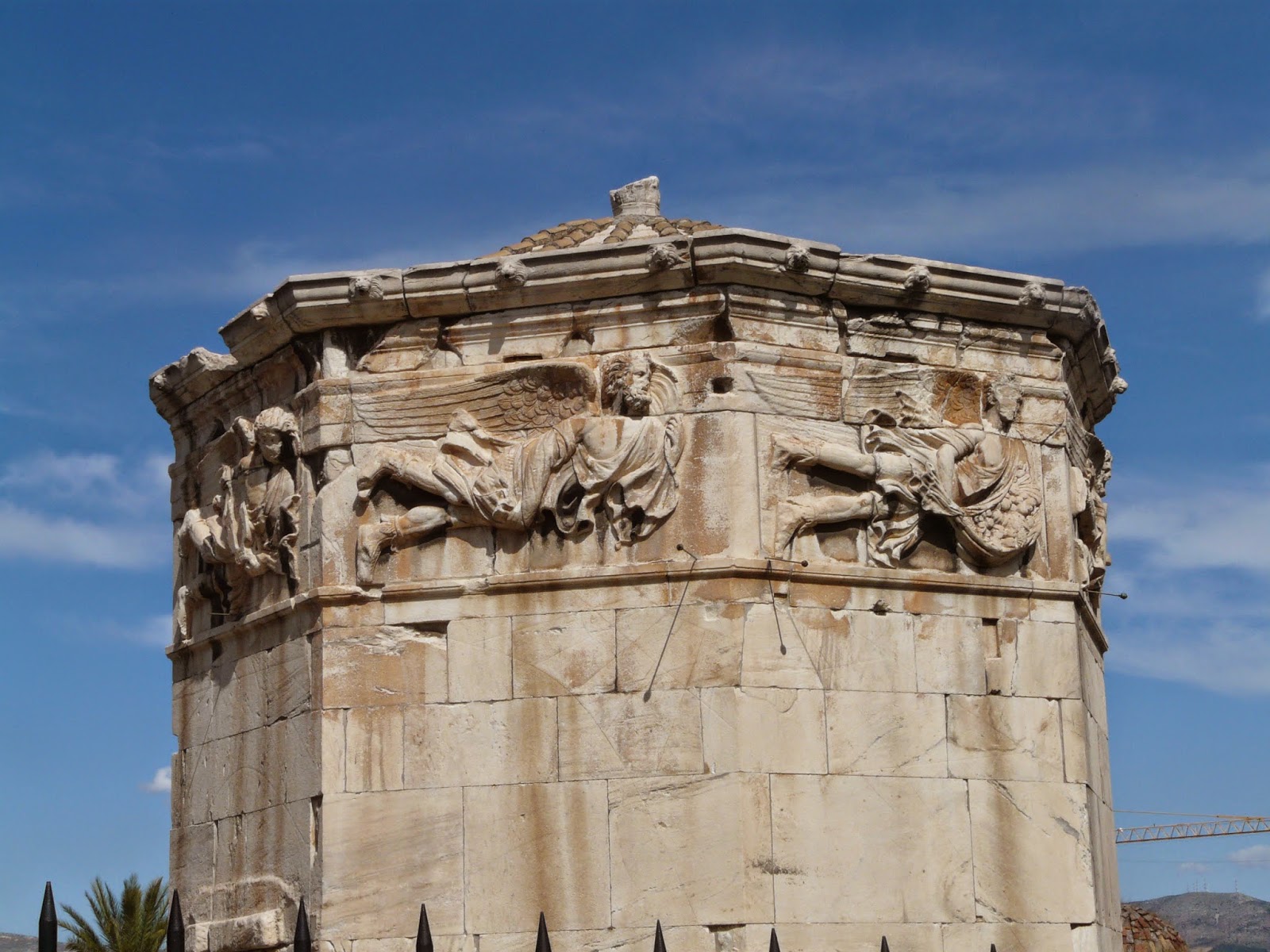In the morning we had a quick city tour. The city today has 6 million inhabitants, over half the population of Greece. Over 98% of Grecians are Greek Orthodox, which is the state religion. The church essentially has informal veto power over any law passed by the parliament. We stopped at the Olympic stadium built for the first modern Olympics in 1896. It held 70,000 people on its marble seats. For the 2004 Olympics it was the finish line for the Marathon, just as it was in ancient times when the messenger ran from Marathon to Athens to announce the victory of the Athenian army in battle and then promptly died from exhaustion. Next stop was the Tomb of the Unknown Soldier in front of the Parliament building. The uniform worn by the guards is the traditional uniform from the war of independence from the Ottoman empire. From here we walked back toward the acropolis passing through the metro station to see the museum. In the metro station you can see the layers of Athens from the 5th Century city up to modern days with some of the key pottery found here as well as a well preserved grave. We walked through the Plaka, the marketplace and then passed the Roman forum ruins. The highlight of the walking tour was the Tower of the Winds built in Roman times with frescoes of the 8 wind directions.
We were given about 2 hours of free time to explore. Mary and I chose to take the metro to the Benaki museum. Here is representative artwork from Classical times through to the 19th century. We were impressed by the gold leave crowns, some of the reconstructed rooms from the 18th century villas, and typical male and female costumes from the 18th and 19th century, particularly the wedding dress of Maria Bonaparte.
Marie Bonaparte's wedding dress |
Lunch was at a seafood restaurant on the waterfront. Then we boarded our ship, the Artemis to begin our cruise. In the evening we traversed the Corinth Canal in about 35 minutes, rather than going around the Peloponnese Peninsula, a 3 day trip. The canal is 56 feet wide, and about 4 miles long. It was spectacular since it has steep walls as high as 276 feet with 6 bridges crossing the canal. We were first in line with two ships following us. The canal was started by Nero in 67 AD, but they only completed about a mile before a revolt in Rome cancelled the project. A small grotto remains as a reminder of these times. The current canal was started in 1881, but not completed until 1893. The canal has no locks, everything is at sea level. Upon entering the Ionian sea we encountered rolling waves until we docked late in the night at Itea.



No comments:
Post a Comment